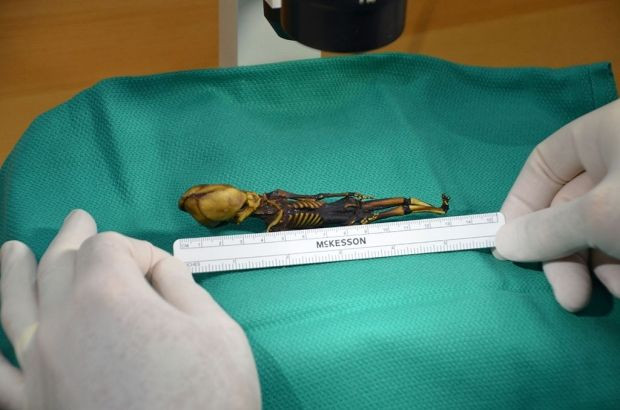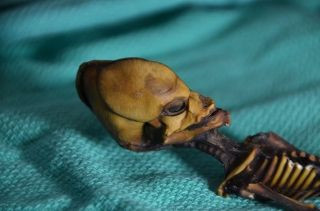Freakishly Tiny 'Alien' Atacama Skeleton Has Never-Before-Seen Molecular Mutations

Scientists have finally analyzed the mysterious skeletal remains of what they believe to be a female fetus, the likes of which have never been seen before or since its discovery. The tiny skeleton, nicknamed Ata and measuring just around six inches long, was discovered nearly a decade ago in an abandoned town in the Atacama Desert of Chile.
The skeleton’s bizarre appearance once gave birth to rumors about it having extraterrestrial origins. However, those unfounded theories can now be put to rest as new analysis of the skeleton revealed it is unquestionably human and has multiple molecular mutations.
Researchers found mutations in multiple genes associated with bone growth, some of which have never been described before.
“To me, it seems that when doctors perform analyses for patients and their families, we’re often searching for one cause — one super-rare or unusual mutation that can explain the child’s ailment. But in this case, we’re pretty confident that multiple things went wrong,” Atul Butte, MD, PhD, director of the Institute for Computational Health Sciences at the University of California, San Francisco, said in a statement.
“I had heard about this specimen through a friend of mine, and I managed to get a picture of it,” Garry Nolan, PhD, professor of microbiology and immunology at Stanford University, said. “You can’t look at this specimen and not think it’s interesting; it’s quite dramatic. So I told my friend, ‘Look, whatever it is, if it’s got DNA, I can do the analysis.’”
With the assistance of Ralph Lachman, MD, clinical professor of radiology at Stanford, who is an expert in a type of pediatric bone disease, Nolan discovered that although the skeleton most likely was that of a female fetus, the skeleton’s bone composition appeared to be that of a six year old. Researchers believe this indicates the female likely had a very rare bone-ageing disorder.
“We thought this would be an interesting exercise in applying the tools that we have today to really see what we could find,” Butte said. “The phenotype, the symptoms and size of this girl were extremely unusual, and analyzing these kinds of really puzzling, old samples teaches us better how to analyze the DNA of kids today under current conditions.”

Researchers extracted a DNA sample from the skeleton and discovered the skeleton is around 40 years old. Although 8 percent of the DNA was unmatchable with human DNA, according to Nolan, this was because of the degradation of the sample and not due to any extraterrestrial biology. A more sophisticated analysis of the skeleton’s DNA was able to match up to 98 percent of the DNA to human DNA.
“This is a super rare human phenotype,” Sanchita Bhattacharya, a bioinformatics researcher at the University of California at San Francisco and lead author of the new study, told the Washington Post. “Given multiple mutations identified in this specimen one could speculate it didn’t survive long.”
According to the researchers, the genetic abnormalities found in Ata’s skeleton contribute to numerous bone deformities, as well as facial malformations or skeletal dysplasia, also known as dwarfism.
“For me, what really came of this study was the idea that we shouldn’t stop investigating when we find one gene that might explain a symptom. It could be multiple things going wrong, and it’s worth getting a full explanation, especially as we head closer and closer to gene therapy,” Butte said. “We could presumably one day fix some of these disorders, and we’re going to want to make sure that if there’s one mutation, we know that — but if there’s more than one, we know that too.”
© Copyright IBTimes 2024. All rights reserved.





















